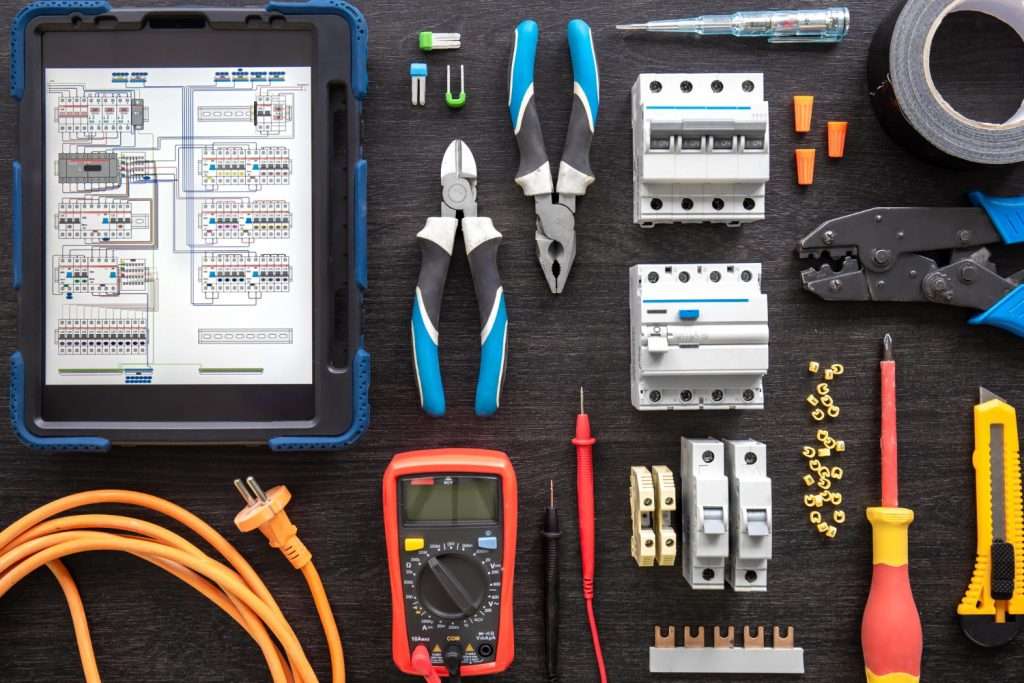Introduction to Indian Electricals Exporting
Indian electrical exporting industry has emerged as a significant contributor to the country’s export sector, showcasing remarkable growth in recent years. This blog post aims to provide an in-depth analysis of the factors driving the expansion of Indian electricals exporting, the challenges faced by exporters, key product categories, and future prospects. Join us as we explore the dynamic landscape of Indian electricals exporting and uncover the potential it holds for the nation.
Overview of the Indian Electricals Industry
The Indian electricals industry encompasses a wide range of products, including transmission and distribution equipment, electrical machinery and appliances, and renewable energy solutions. With a diverse ecosystem of manufacturers and suppliers, this industry plays a vital role in meeting domestic demands and catering to international markets.
Significance of Electricals Exporting for India
Electricals exporting has emerged as a crucial driver of growth for the Indian economy. It not only contributes to foreign exchange earnings but also strengthens India’s position as a global manufacturing hub. Furthermore, it creates employment opportunities, fosters technological advancements, and promotes the development of ancillary industries. The growth of electricals exporting aligns with India’s vision of becoming a $5 trillion economy by 2025.
Current Challenges and Opportunities
While the Indian electricals export sector has witnessed significant growth, it also faces certain challenges. Infrastructure constraints, logistics issues, compliance with international standards, and market competition are some of the hurdles that exporters encounter. However, these challenges present opportunities for innovation, collaboration, and skill enhancement to address them effectively.
Factors Driving the Growth of Indian Electricals Exporting
Competitive Manufacturing Capabilities
Indian electricals exporters leverage their competitive manufacturing capabilities to cater to international markets. Skilled labor force, technological advancements, cost-effective production processes, and quality assurance measures contribute to their success. The availability of skilled labor allows manufacturers to produce high-quality products at competitive prices. Technological advancements further enhance manufacturing efficiencies, streamline production processes, and drive product innovation.
Expanding Global Market Demand
The global market demand for electricals continues to rise, presenting immense opportunities for Indian exporters. Increasing infrastructural development worldwide, rising renewable energy projects, electrification initiatives, and the growing consumer electronics market are key drivers of this demand. As countries focus on expanding their infrastructure and embracing sustainable energy solutions, the need for reliable electricals manufactured in India becomes paramount.
Government Initiatives and Policy Support
The Indian government has implemented several initiatives and policies to support and promote electricals exports. Promotional schemes specifically designed for electricals exporters incentivize their growth and market penetration. Ease of doing business reforms, such as simplifying regulatory procedures and improving customs processes, facilitate easier export procedures. Additionally, bilateral trade agreements and collaborations with other nations create favorable trade relationships, opening new avenues for export opportunities.
Key Product Categories in Indian Electricals Exporting
Indian electrical exports cover a wide range of product categories. Let’s explore the three major categories:
Transmission and Distribution Equipment
- Transformers: Transformers play a crucial role in transferring electrical energy from power generation sources to end-users. Indian manufacturers produce a variety of transformers, including power transformers, distribution transformers, and specialty transformers.
- Switchgears: Switchgears protect electrical systems from overcurrents, short circuits, and other electrical faults. Indian exporters offer a diverse range of switchgear, including circuit breakers, contactors, and fuse units.
- Protection Devices: Protection devices, such as relays and safety switches, ensure the safe operation of electrical networks. Indian manufacturers prioritize the production of reliable and technologically advanced protection devices that meet international quality standards.
Electrical Machinery and Appliances
- Electric Motors and Generators: Indian manufacturers are known for their high-quality electric motors and generators, catering to diverse applications across industries. These products are designed to offer optimal performance, energy efficiency, and durability.
- Cables and Wires: Indian exporters provide an extensive range of cables and wires, including power cables, control cables, and communication cables. These products adhere to international standards, ensuring the safe and efficient transmission of electricity.
- Lighting Products: India’s lighting industry has witnessed remarkable growth, with exporters offering a wide array of lighting products, including LED lighting solutions. Energy-efficient, cost-effective, and aesthetically appealing lighting products are in high demand worldwide.
Renewable Energy Solutions
- Solar Power Equipment: India has emerged as a global leader in solar energy production, leading to a surge in exports of solar power equipment. Indian manufacturers specialize in solar panels, solar inverters, solar batteries, and other components required for solar power generation.
- Wind Power Devices: With its vast coastline and favourable wind resources, India holds immense potential in wind power generation. Exporters provide wind turbines, wind energy converters, and related components to meet the global demand for clean and sustainable energy.
- Energy Storage Systems: As the demand for uninterrupted power supply grows, energy storage systems have become crucial in the international market. Indian manufacturers offer advanced energy storage solutions, including batteries and energy management systems, supporting the integration of renewable energy sources.
Challenges Faced by Indian Electrical Exporters
Indian electrical exporting encounters various challenges that impact their growth and global market reach. Let’s examine the major hurdles:
Infrastructure Constraints and Logistics Issues
- Inadequate Transportation Facilities: Limited transportation infrastructure, including roads, ports, and railways, poses a significant challenge for electricals exporters. It leads to delays, higher costs, and logistical complexities.
- Connectivity Limitations for Remote Manufacturing Hubs: Some manufacturing hubs in remote locations face connectivity limitations, making it difficult to transport goods efficiently. This impacts timely deliveries and hinders their competitiveness.
- Delayed Customs Processes: Slow customs clearance procedures can cause shipment delays, impacting the exporters’ ability to meet deadlines and fulfill customer orders promptly.
Compliance with International Standards and Regulations
- Ensuring Product Safety and Certification: Meeting international safety standards and obtaining certifications can be a complex and time-consuming process for exporters. This includes adhering to safety regulations, carrying out product testing, and obtaining relevant certifications.
- Adapting to Diverse Quality Requirements: Different countries have varying quality requirements and standards. Exporters need to customize their products to meet these specific requirements, often necessitating additional investments in research and development.
- Managing Intellectual Property Rights: Protecting intellectual property rights is crucial when exporting electricals. Exporters must navigate complex legal frameworks and ensure their products do not infringe on trademarks, copyrights, or patents.
Market Competition and Brand Recognition
- Competing with Established International Brands: Indian electricals exporters face competition from established international brands that already have a strong presence in global markets. Building brand recognition and trust is a continuous effort for exporters.
- Building Trust and Credibility in Global Markets: Establishing credibility and providing reliable products are essential to gain the trust of international buyers. Quality assurance mechanisms and effective customer support play a vital role in fostering trust.
- Adopting Effective Marketing and Branding Strategies: Implementing robust marketing and branding strategies is crucial to stand out in the competitive global market. Exporters must understand customer preferences, leverage digital platforms, and enhance their visibility through targeted campaigns.
Future Prospects and Strategies for Indian Electricals Exporting
The future of Indian electricals exporting is promising, and exporters can employ various strategies to capitalize on emerging opportunities:
Identifying Emerging Export Markets
- Analysis of Potential Regions and Countries: Conducting thorough market research helps identify potential regions and countries where demand for Indian electricals is expected to rise. Understanding market dynamics, consumer preferences, and regulatory frameworks is crucial for market entry.
- Market Diversification Opportunities: Exploring new markets and diversifying the export base reduces dependency on specific regions or countries. Exporters can identify niche markets, emerging economies, or countries with rapid infrastructural development to expand their market reach.
Leveraging Technological Advancements
- Research and Development for Innovative Products: Investing in research and development enables the creation of innovative, technologically advanced electricals. This enhances product differentiation and gives Indian exporters a competitive edge in global markets.
- Adoption of Automation and Smart Manufacturing: Embracing automation, robotics, and smart manufacturing technologies optimizes production processes, reduces costs, and improves product quality. Exporters can leverage Industry 4.0 practices to enhance their manufacturing capabilities.
Strengthening Collaborations and Partnerships
- Joint Ventures with International Firms: Establishing partnerships and joint ventures with international firms allows Indian exporters to access advanced technologies, expand their market reach, and benefit from shared expertise.
- Knowledge Exchange and Skill Enhancement Programs: Collaborations with foreign companies enable knowledge exchange and skill enhancement. Exporters can participate in training programs, technical workshops, and industry conferences to upgrade their skills and stay updated with the latest industry trends.
Summary
In this comprehensive analysis, we explored the remarkable growth and potential of the Indian electricals export sector. We delved into the factors driving its expansion, the key product categories, challenges faced by exporters, and future strategies. As India continues to strengthen its position on the global stage, the electricals export industry is poised to play a pivotal role in driving economic growth, fostering innovation, and establishing India as a trusted global manufacturing hub.
Key Takeaway Points
- The Indian electricals export sector is growing rapidly and contributes significantly to the country’s economy.
- Competitive manufacturing capabilities, expanding global market demand, and government support are key factors fueling growth.
- Transforming and distribution equipment, electrical machinery and appliances, and renewable energy solutions are the major product categories in electricals export.
- Infrastructure constraints, compliance with international standards, and market competition are challenges faced by exporters.
- Future prospects lie in identifying emerging export markets, leveraging technological advancements, and strengthening collaborations.
Frequently Asked Questions (FAQs)
A. What are the top destination countries for Indian electricals exports?
India’s electricals exports find their way to various countries worldwide. Some of the prominent destinations include the United States, Germany, the United Kingdom, United Arab Emirates, and neighboring countries in South Asia.
B. How does government support impact the electricals export sector?
The government’s support plays a crucial role in nurturing the electricals export sector. Initiatives such as promotional schemes, ease of doing business reforms, and bilateral trade agreements create a conducive environment for exporters to thrive and expand their market reach.
C. What are the major challenges faced by Indian electricals exporters?
Indian electricals exporters face challenges such as infrastructure constraints, compliance with international standards, and fierce market competition. These challenges necessitate innovative solutions, collaboration, and continuous improvements in quality and efficiency.
D. How can small-scale electricals manufacturers enter the export market?
Small-scale electricals manufacturers can enter the export market by investing in technology and quality enhancements, conducting market research, building a robust supply chain, and leveraging government initiatives and policy support targeted at promoting exports.
E. What steps can be taken to enhance the competitiveness of Indian electricals in global markets?
Enhancing the competitiveness of Indian electricals in global markets requires a multi-faceted approach. Investing in research and development, adopting automation and smart manufacturing, focusing on product differentiation, and strengthening collaborations can contribute significantly to gaining a competitive edge.









